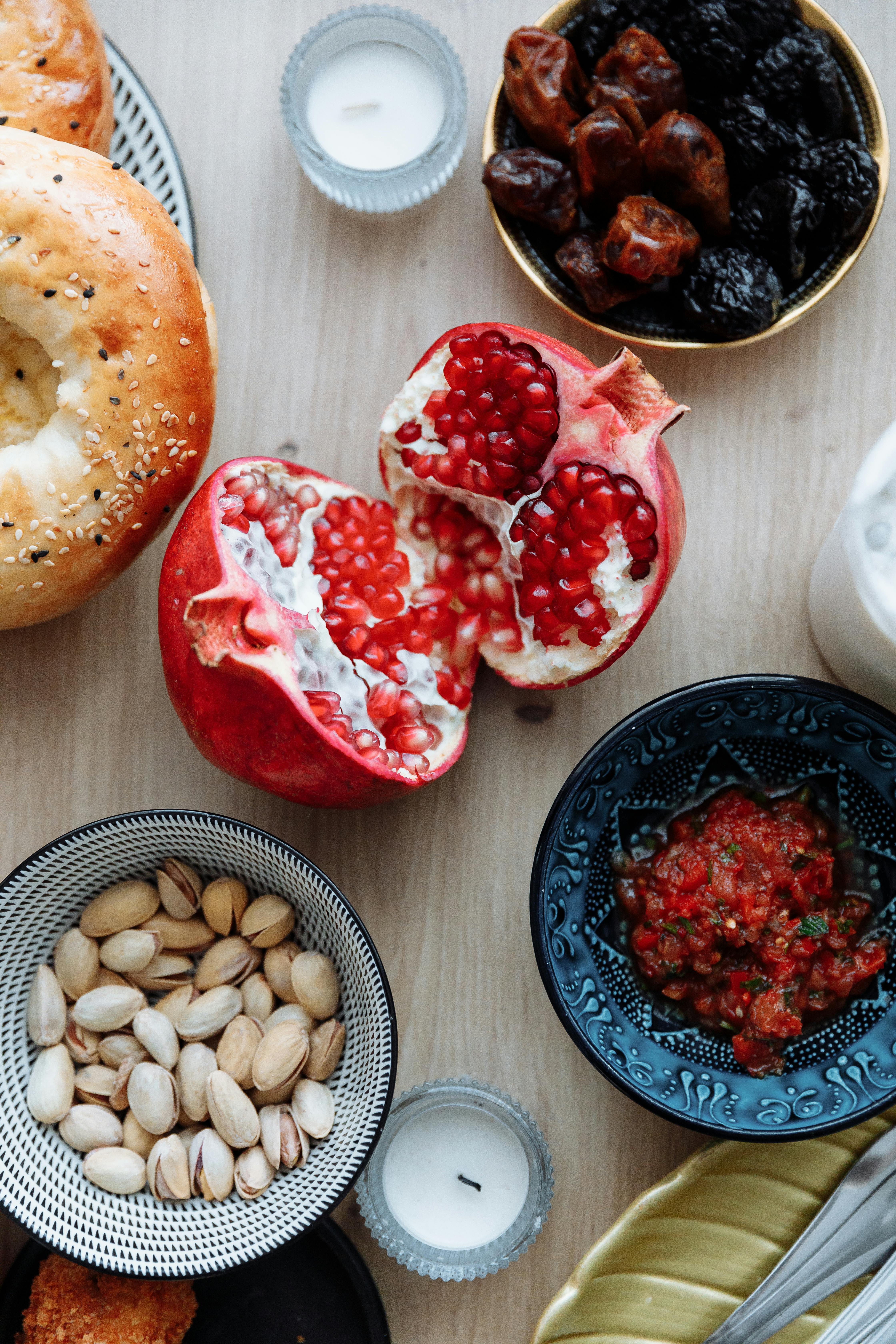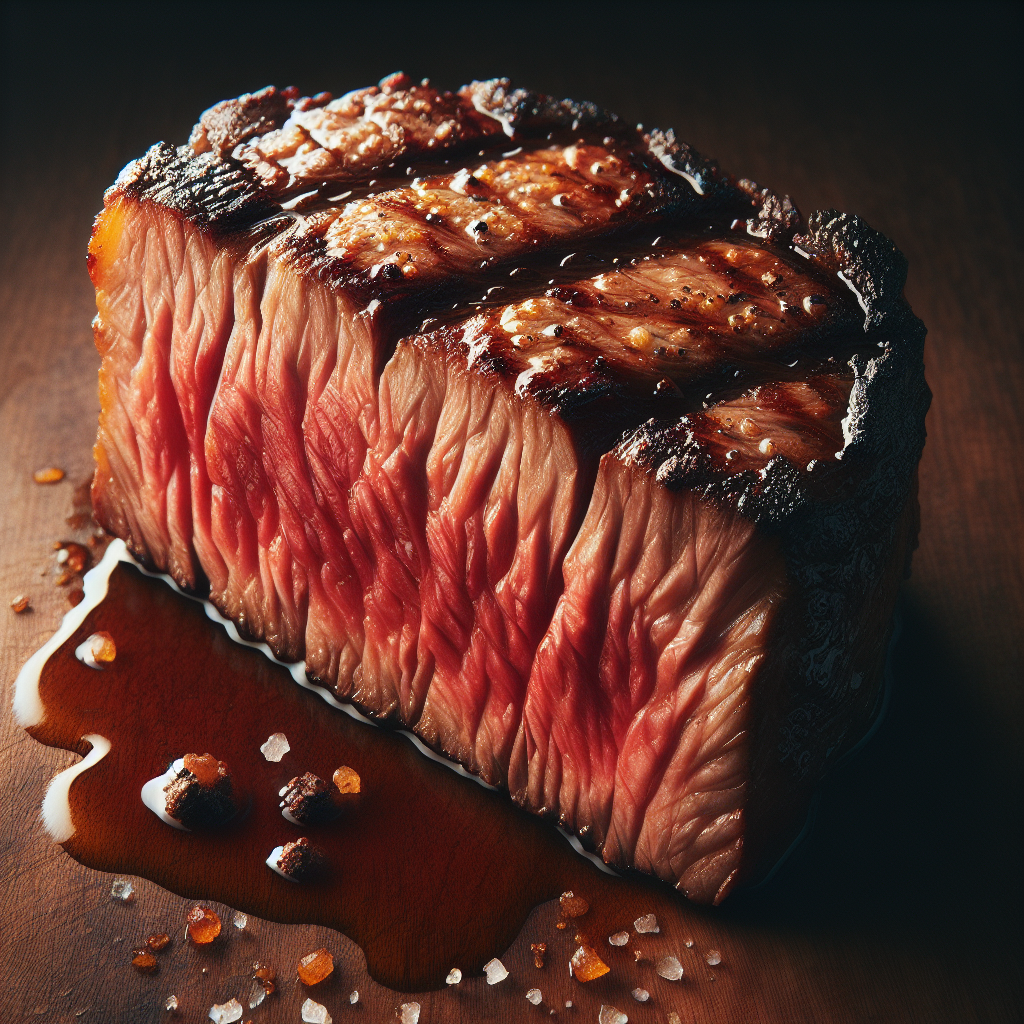In the world of culinary delights, there is one element that often gets overlooked but plays a crucial role in creating an exceptional dining experience: food texture. From the crispiness of a perfectly seared steak to the smooth, velvety texture of a rich chocolate mousse, understanding how to achieve the right balance of textures in your dishes can elevate your cooking to new heights. In this article, we will explore the importance of food texture and share some valuable tips and techniques to help you create harmonious textures in your culinary creations. So get ready to embark on a journey of mouthwatering sensations as we delve into the captivating realm of food texture.

Understanding Food Texture
Food texture refers to the physical characteristics of food that are perceived by our sense of touch when we eat. It includes sensations such as crispiness, creaminess, chewiness, and crunchiness. Texture plays a vital role in our overall dining experience as it contributes to the pleasure and satisfaction we derive from different dishes. By understanding and utilizing food texture effectively, you can elevate the taste and enjoyment of your culinary creations.
Importance of Food Texture in Dishes
Food texture is not just about how the food feels in your mouth; it also affects the flavor perception and overall dining experience. The texture of a dish can enhance or detract from its taste, making it an essential aspect of cooking. The way a food feels when you bite into it can determine whether it is perceived as enjoyable or unappealing. Balancing different textures in a dish can add depth and complexity to your recipes, making them more interesting and satisfying.

Factors Affecting Food Texture
Several factors influence the texture of food, ranging from the ingredients used to the cooking techniques and even the temperature and cooking time.
Ingredients
The choice of ingredients can significantly impact the texture of your dish. For example, using flour with a higher protein content can make baked goods chewier, while incorporating fat into the dough can contribute to a flakier texture. Ingredients like eggs, dairy, and starches can also add creaminess and thickness to sauces and soups, altering their overall texture.
Cooking Techniques
The way you cook your food also affects its texture. Techniques like grilling, roasting, frying, and baking can create crispy surfaces while maintaining a tender interior. Cooking methods like braising and stewing, on the other hand, can result in tender and succulent textures. The duration and intensity of heat during cooking can ultimately determine whether a dish is soft, crunchy, or somewhere in between.
Temperature and Cooking Time
Temperature and cooking time go hand in hand in determining the texture of food. High temperatures tend to create more crispiness and browning, while lower temperatures result in softer and more tender outcomes. Adjusting the cooking time can also influence the texture of ingredients like vegetables, where shorter cooking times can leave them crunchier, and longer cooking times can make them softer.
Common Textures in Food
Understanding the different textures commonly found in food is crucial for achieving a well-balanced dish. Here are some of the most prevalent textures:
Crispy
Crispiness is characterized by a firm and brittle texture that provides a satisfying crunch when bitten into. This texture is often achieved through techniques like frying, baking, or toasting. Examples of crispy foods include fried chicken, potato chips, and roasted vegetables.
Creamy
Creaminess refers to a smooth and rich texture that coats the palate with a velvety sensation. This texture is often achieved with the addition of ingredients like cream, butter, or cheese. Creamy dishes can include sauces, soups, and desserts like ice cream and custards.
Chewy
Chewiness refers to a texture that requires some effort to break down when biting into it. It often provides a satisfying resistance to the teeth and jaw. Ingredients like meat, pasta, and certain grains can contribute to this texture. Examples of chewy foods include steak, bagels, and gummy candies.
Crunchy
Crunchiness is characterized by a crisp and firm texture that shatters into smaller pieces when bitten into. It can be achieved through ingredients like nuts, seeds, or breading. Foods like crackers, granola, and fresh vegetables can provide a satisfying crunch.

Creating Balance with Food Texture
A well-balanced dish utilizes a combination of contrasting or complementary textures to create a harmonious dining experience. By carefully considering the textures in your recipe, you can enhance the overall enjoyment of the dish.
Contrasting Textures
Contrasting textures involve incorporating elements that are entirely different from one another. For example, pairing a creamy sauce with crispy vegetables or topping a chewy steak with a crunchy salad can create a delightful contrast in each mouthful. Contrasting textures create exciting sensory experiences and add depth to your dishes.
Complementary Textures
Complementary textures involve incorporating elements that enhance and complement each other, creating a synergistic effect. For example, serving a creamy dessert with a crumbly cookie or pairing a tender piece of fish with a silky sauce can create a harmonious blend of textures. Complementary textures work together to enhance the overall enjoyment of the dish.
Tools and Techniques for Enhancing Food Texture
There are various tools and techniques you can use to enhance and manipulate food texture, allowing you to achieve the desired results in your culinary creations.
Using Breading and Batters
Breading and batters can be employed to create a crispy coating on foods. The process typically involves dipping ingredients like meat, seafood, or vegetables in a batter or coating them with breadcrumbs before frying or baking. This technique adds both flavor and texture to the dish.
Browning and Caramelization
Browning and caramelization are techniques that involve the Maillard reaction. By applying heat to ingredients with natural sugars, such as onions, meat, or vegetables, you can create a beautiful browned crust. This crust adds depth of flavor and contributes to a desirable texture in your dishes.
Using Different Cooking Methods
Experimenting with different cooking methods can introduce diverse textures to your cooking. Techniques like grilling and broiling can add a smoky and charred texture, while steaming and poaching can result in a delicate and tender outcome. By combining various cooking methods, you can create a wide range of textures to suit your taste.
Texture in Different Cuisines
Different cuisines around the world offer unique textures to their dishes. Let’s explore how texture plays a role in some popular cuisines:
Asian Cuisine
Asian cuisine is renowned for its diverse and distinct textures. From crispy spring rolls and crunchy stir-fried vegetables to silky noodles and chewy dumplings, Asian dishes often incorporate a combination of crispy, tender, and slippery textures. The delicate balance of textures is key to creating a harmonious blend of flavors.
Mediterranean Cuisine
Mediterranean cuisine focuses on fresh and light textures. Dishes like hummus, tzatziki, and tabouleh offer creamy and smooth textures, while grilled meats, roasted vegetables, and crispy falafel provide a satisfying crunch. The textures in Mediterranean cuisine aim to balance the richness of flavors and create a refreshing dining experience.
Latin American Cuisine
Latin American cuisine encompasses a wide range of textures, owing to its diverse culinary traditions. From crispy tortillas and creamy guacamole to tender shredded meats and chewy empanadas, Latin American dishes often feature contrasting textures that add excitement and depth to the cuisine.
Texture and Presentation
Texture also plays a crucial role in the visual appeal and presentation of a dish. The way food looks on a plate can influence our expectations and enhance the overall dining experience.
Plate Composition
Carefully considering the arrangement and composition of different textures on a plate can create visual interest and entice the diner. Combining ingredients with varying textures, colors, and shapes can elevate the visual appeal of your dish. For example, pairing a crispy protein with a creamy sauce and garnishing with vibrant vegetables can make the dish visually appealing and exciting.
Garnishes and Toppings
Garnishes and toppings can also contribute to the overall texture of a dish. Adding a sprinkle of toasted nuts, crispy bacon bits, or fresh herbs can provide an additional layer of texture and flavor. Garnishes and toppings can enhance the presentation and add a final touch to your culinary creation.
Texture in Different Courses
Texture can vary across different courses of a meal, with each course offering a unique sensory experience.
Appetizers and Starters
Appetizers and starters often showcase a variety of textures to stimulate the appetite. Incorporating crispy elements, like crostinis or bruschetta, with creamy dips or spreads can create an exciting contrast. Incorporating textures like soft cheeses, crunchy crudités, or buttery croutons can add depth and interest to the opening course.
Main Courses
Main courses often feature a combination of textures to create a satisfying and well-rounded meal. Pairing tender proteins, such as grilled chicken or seared fish, with crisp vegetables or grains can create a diverse and balanced texture profile. Incorporating elements like a creamy sauce or a crispy crust can add complexity and elevate the flavors.
Desserts
Desserts allow for infinite creativity when it comes to texture. From airy mousses and silky custards to crunchy cookies and gooey cakes, desserts often combine a multitude of textures to provide a delightful ending to a meal. The balance of textures in desserts can range from light and delicate to rich and indulgent, offering something for every palate.
Texture and Dietary Restrictions
When cooking for individuals with dietary restrictions, paying attention to texture becomes even more important. Modifying the texture of certain dishes can make them accessible and enjoyable for those with specific needs.
Texture Modifications for Dietary Needs
For individuals with chewing difficulties or swallowing disorders, modifying textures may be necessary. Pureeing or blending foods can create smoother textures, making it easier to consume. Incorporating ingredients like yogurt, pureed fruits, or melted chocolate can enhance the mouthfeel and enjoyment of these modified dishes.
Experimenting with Texture
Exploring and experimenting with different textures in your recipes can be a fun and creative process. By stepping out of your comfort zone, you can discover unexpected and exciting combinations.
Creating Unexpected Textures
Think outside the box and experiment with unconventional ingredients and techniques to create unique textures. Incorporate ingredients like puffed rice, freeze-dried fruits, or edible flowers to add elements of surprise to your dishes. Using molecular gastronomy techniques or utilizing food dehydrators can also offer innovative textures.
Texture Pairings
Exploring the world of texture pairings can open up endless possibilities for culinary creativity. Consider contrasting textures, such as combining a soft mousse with a crunchy biscuit or pairing a chewy caramel with a smooth ganache. Texture pairings can enhance flavors, create interesting mouthfeel, and elevate your dishes to new heights.
In conclusion, understanding food texture is essential for creating well-balanced and enjoyable dishes. By considering ingredients, cooking techniques, and temperature, you can manipulate and enhance the textures in your cooking. While balancing contrasting or complementary textures, you can create exciting sensory experiences for your diners. Texture also plays a role in the visual appeal of a dish, and by incorporating the right garnishes and considering plate composition, you can enhance the overall dining experience. Whether you’re cooking appetizers, main courses, or desserts, texture can elevate each course and create a memorable meal. By experimenting with texture and exploring various cuisines, you can expand your culinary repertoire and surprise your taste buds. So, get creative, embrace texture, and take your dishes to new heights!

